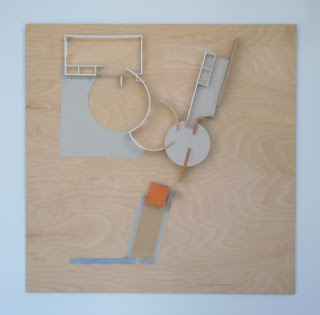Monday, March 9, 2015
the interior design puzzle - one piece at the time
Wednesday, June 18, 2014
A lesson learned
- Sometimes your best effort isn't good enough to land you a deal.
- You can’t learn if you aren’t willing to listen.
- The only way to get other people to care about you is to care about them first.
- You can’t find opportunities for success if you aren’t looking for them.
- Just because social media is free doesn’t mean it gets you results.
- You have to change the conversation before you can close the deal.
- The difference between success and failure is just a decision to keep trying.
- If you market like a “person” you have a better chance of getting people to buy.
- Just because all your competitors are doing it doesn’t mean you should too.
- You don’t have to build rapport to build trust. Chit-chat is overrated.
- Pretending like you never make mistakes doesn’t make it so.
- Working smarter is a result of hard work; not a replacement for it.
- Your big moment usually comes before you’re ready for it.
- “Apologies” and “Thank You’s” are the best way to create a conversation on your terms.
- You have to give a lot to get a lot.
- Spend less time networking and handing out business cards. Be amazing. People will find you.
- Once you provide the answer people stop listening. Leave clues instead.
- There is no easy way out for big problems; but there is always a way out.
- Negativity isn’t reality. Not for you. Not for your critics.
- You don’t need permission to start marketing to a prospect.
- Being “professional” is key to getting prospects to want to do business with you.
- Working smart will get you more applause. Working hard will get more done in the long run.
- Sometimes bad things happen to good people with great strategies.
- Just because it hasn’t worked out already doesn’t mean that it won’t ever.
- Anything that is easy to do isn’t going to lead to success.
- Ironically, the quickest way to become an expert is to defy industry experts.
- The number of people who believe in you doesn’t correlate to your chances of success.
- Being the smartest person in the room doesn’t necessarily make you rich or wise.
- You don’t have to be “up for the job” to finish the job.
- If you haven’t failed a lot, you probably aren’t going to win a lot.
- Experience is what you get just after you need it.
Monday, June 16, 2014
Sarah Lewis: Creativity and Privacy Go Hand in Hand
See her talk on this link:
http://vimeo.com/98084209
Sunday, September 11, 2011






elee 2004
| DESIGN THINKING |
"Design Thinking refers to the methods and processes for investigating ill-defined problems, acquiring information, analyzing knowledge, and positing solutions in the design and planning fields. As a style of thinking, it is generally considered the ability to combine empathy for the context of a problem, creativity in the generation of insights and solutions, and rationality to analyze and fit solutions to the context. While design thinking has become part of the popular lexicon in contemporary design and engineering practice, as well as business and management, its broader use in describing a particular style of creative thinking-in-action is having an increasing influence on twenty-first century education across disciplines. In this respect, it is similar to systems thinking in naming a particular approach to understanding and solving problems."
Concept model / Thesis Core Project
OCAD University
2004
Monday, September 5, 2011


BOXES & BOXES
BOOKSHELF - Furniture Design - ROOM DIVIDER
elee 2011
The project consists in a series of boxes of different sizes, all organized rhythmically and contained within a solid frame. It creates possibilities of storage for books, tableware or other things around the household, it adapts to your needs.
The idea of showing only what you want to show, and keeping hidden those items you want to keep behind doors. It continues a dialogue on "revealing and concealing" as a concept.
The case study makes for a great storage unit for small spaces.
Make your own configuration by placing boxes as you desire.
For inquires please contact: el@eleedesign.com
© 2008
Saturday, September 3, 2011

AFTER TWO YEARS, there are many stories to tell.
two years of absence from the blog, and i am back.
i was away working on the foundation of my career;
arepa café, a forty seats restaurant dedicated to sale arepas in the city of Toronto.
its mandate is to promote Venezuelan food and culture in Canada.

grilled arepas
arepa is a grilled corn meal bread, nutrional and gluten free.
it is the bread of northern South America.
the restaurant project has been a platform for the design/entrepreneurship objectives.
the process started by working a concept and creating the business plan, developing construction drawings for the interior design of arepa café. we execute the design and open for business.
we have been on Queen Street West for almost two years and had sold about forty thousand arepas, thanks to a supportive and curious community.

Wednesday, March 11, 2009






Tuesday, February 24, 2009
Sunday, February 22, 2009

- Bertoia Diamond Lounge Chair. KNOLL
- Chair by Maurice Burket for Arakana Ltd1960
- Vico Magistretti, Selene Chair, 1969
- Le Corbusier LC2 Sofa. CASSINA
- Piero de Martini, La Barca Table. CASSINA, 1975
- Leather Daybed. CAPUY
- Jonathan Adler, Accessories
Thursday, March 20, 2008



Wednesday, March 5, 2008

Storage sculpting the interior space, walnut boxes, and white lacquered credenza base.
LINEA 01 is adaptable, sturdy and neutral.



The final result:




























